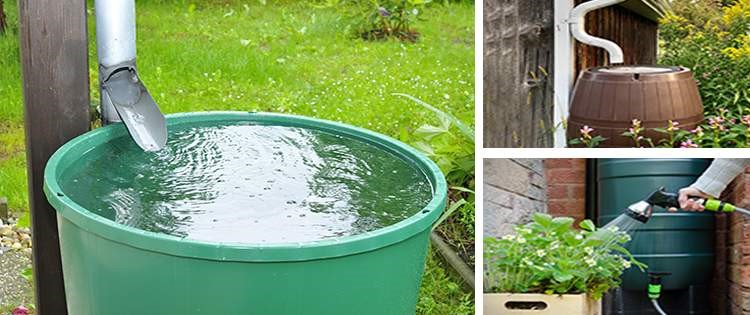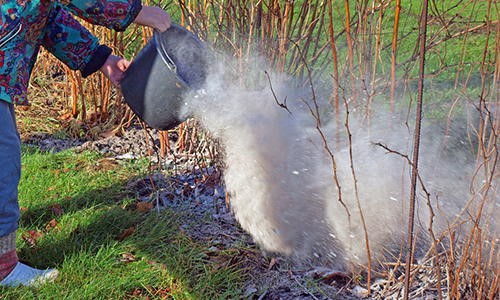Blueberries are a tasty and healthy fruit that is popular all over the world. They are not only high in antioxidants and other beneficial components, but they are also simple to cultivate in your own garden. Growing your own blueberries is a fun and gratifying way to enjoy fresh, tasty fruit all summer long, whether you’re an expert gardener or just getting started.
In this guide we’ll walk you through everything you need to know to successfully grow blueberry bushes in your own garden, from choosing the correct kind to preparing the soil to planting, watering, and fertilizing your plants. We’ll also discuss common pests and illnesses to avoid, as well as harvesting and storing your blueberry crop. Let’s get started.
A Brief History
Blueberries have a rich history that dates back centuries.
They were first cultivated by Native Americans, who used them for food, medicine, and dye. The wild blueberry, a smaller and more flavorful cousin of the cultivated variety, was an important food source for many Native American tribes, who ate them fresh, dried, or mixed with other food.
European settlers in North America also quickly discovered the delicious flavor and health benefits of blueberries, and by the 18th century, they were being cultivated in gardens and orchards throughout the region. Today, blueberries are one of the most popular and widely grown fruits in the world, with commercial production occurring in more than 38 countries.
From humble beginnings as a wild berry, the blueberry has become a staple of kitchens and gardens around the world, prized for its sweet, tangy flavor and numerous health benefits.
Today, blueberries are widely available in many forms: fresh, frozen, canned and dried. They are used in many recipes from muffins and pies to sauces and smoothies. They are also a great source of nutrition, containing high levels of antioxidants and vitamins A, C and E. Blueberries are also low in fat and calories yet high in fiber, making them a smart choice for a healthy diet.
Growing blueberry bushes at home is a great way to enjoy fresh blueberries throughout the summer months. Planting your own blueberry bushes is easy once you know how.
Nutritional Benefits
Blueberry plants are a great addition to any home garden because they offer many nutritional benefits. The berries are high in nutrients, antioxidants, fiber, and vitamins, making them a healthy addition to any diet.
Blueberries not only provide health benefits, but they also have a pleasant flavor and can be used in many different recipes. Blueberries are often called a “superfood” due to their high nutritional value and health benefits. Here are just some of the key nutritional benefits of blueberries:
- High in antioxidants: Blueberries are one of the richest sources of antioxidants, which help protect your body against free radicals and reduce inflammation.
- Low in calories: Blueberries are low in calories and high in fiber, making them a great choice for weight management and digestive health.
- Rich in vitamins and minerals: Blueberries are a good source of vitamins C and K, as well as several important minerals, including manganese and potassium.
- Boost brain function: Studies have shown that blueberries can improve brain function and memory, thanks to their high levels of flavonoids and other compounds.
- Promote heart health: Blueberries have been shown to lower blood pressure and reduce the risk of heart disease, thanks to their high levels of anthocyanins and other heart-healthy compounds.
- Support immune system: Blueberries are rich in vitamin C, which is essential for a healthy immune system, and can help reduce the duration and severity of colds and other infections.
Overall, blueberries are a delicious and nutritious fruit that offer numerous health benefits. Whether you eat them fresh, frozen, or in other forms, adding blueberries to your diet is a great way to support your overall health and well-being.
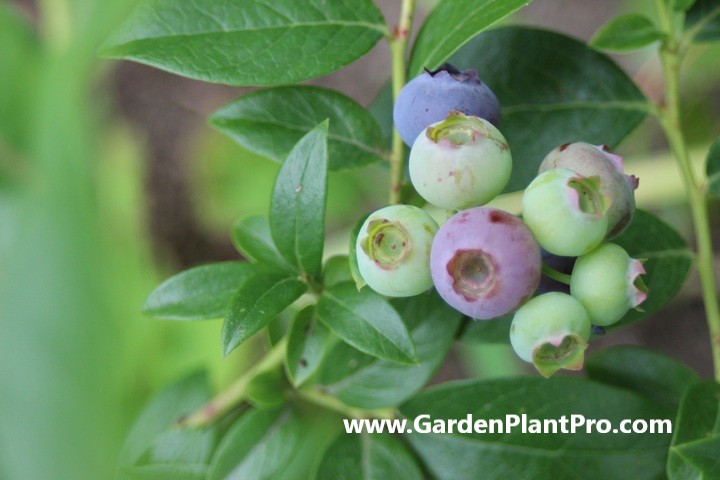
Common Varieties & Their Uses
When planting blueberry bushes for home use, there are many varieties to choose from. Different varieties have different characteristics, uses, and growth habits.
Some are more suited to a particular climate or soil type than others. It is important to research and understand the different varieties before making a selection.
The most common varieties of blueberries grown in the US are Northern Highbush, Southern Highbush, Rabbiteye, and Half-High.
Northern Highbush is the most popular variety as it has a vigorous growth habit and produces large berries that ripen early in the season. Southern Highbush is also popular as it is well-suited to warmer climates and produces abundant, sweet berries. Rabbiteye is adapted to hot climates with high humidity and produces medium-sized berries that ripen late in the season. Half-High varieties are low-growing shrubs that produce small, tart berries.
When selecting a variety for home use, consider the climate, soil type, taste preferences, and desired yield. Plant two or more varieties for successful pollination and heavier yields. For example, Northern Highbush can be planted with Southern Highbush or Rabbiteye for better cross pollination and larger yields.
It is important to note that blueberry bushes require acidic soil for optimal growth and production. If your soil is not naturally acidic, it can be amended with pine needles or sulfur to lower its pH level. Also keep in mind that each variety has different spacing requirements so be sure to check before planting.
Once planted, blueberry bushes require a moderate amount of care such as feeding with a standard garden fertilizer and pruning at the end of each growing season to keep them healthy and productive. With proper care and selection of compatible varieties, you can enjoy delicious home-grown blueberries year after year.
When To Sow
The best time to sow blueberries depends on the climate and the specific variety of blueberry you are planting. In general, blueberries are best planted in the early spring, after the last frost date in your area. This will give the plants plenty of time to establish roots before the hot summer weather sets in.
Before sowing, make sure you have the right location and soil conditions for your blueberry plants. Choose a sunny spot that is free from weeds and with well-drained soil. Avoid planting near trees, as they will block out sunlight and take away moisture from the soil.
DIY PROJECT: Collect rainwater no matter where you live...
This DIY project is the best way to legally collect rainwater NO MATTER where you live. Get chlorine-free water, cut down on your water bills, and have enough for an emergency situation or to water your garden. Read More Here...
When it comes to choosing what type of blueberry plant you want to grow, consider the climate of your area. For warmer areas, Rabbit Eye and Southern Highbush are best while Northern Highbush are better suited for southern regions. Most dealers can ship orders according to your area’s desired planting time, so make sure you have your site prepared when they arrive.
If you are planting blueberries from seeds, you can start them indoors in late winter, about 2-3 months before the last expected frost. This will give the seeds plenty of time to germinate and grow into seedlings that are ready to transplant outdoors in the spring.
Choose Location & Prepare The Soil
When growing blueberry bushes, choosing the right location and preparing the soil is essential.
Blueberries prefer full sun and well-drained soils with a pH of 4.5 or lower. Select a sunny spot with good air movement to ensure optimal growth. Avoid planting near trees, as they can block out sunlight and suck up the moisture needed for healthy blueberry plants.
Before planting, it is important to prepare the soil by digging in plenty of organic matter such as peat moss or compost to give the plants plenty of nutrients. The soil should also be well-worked to ensure that it is free of weeds and properly drained before adding blueberries. If necessary, make sure to adjust the pH by adding an acidic fertilizer or organic matter such as pine needles, coffee grounds, or oak leaves. Once the soil has been prepared, it’s time to plant your blueberry bushes!
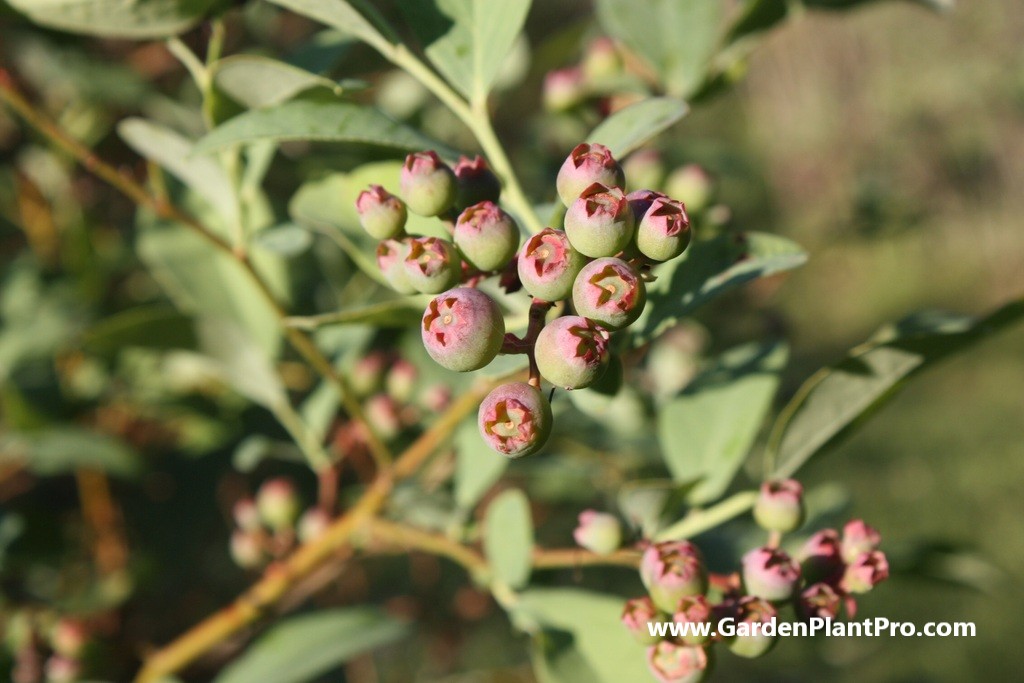
Plant The Seeds, Seedlings Or Cuttings
If you’re looking to grow blueberry bushes in your own garden, there are several methods available for planting. Seeds, seedlings, and cuttings are all viable options for starting a blueberry bush.
Seeds can take a long time to germinate and require special treatment to ensure success, so many gardeners choose to plant seedlings or cuttings instead.
To plant blueberry seeds, you’ll need to macerate them first. This can be done in a food processor or blender, or by mashing them with a fork. Once they’re ready, insert the seeds into moist soil that is at least four to five inches deep. Keep the soil moist but not saturated and the seeds should germinate in about one month.
If you’re planting seedlings or cuttings, you’ll want to buy them from a reputable nursery. For seedlings, look for 1-3 year old plants that come in containers or bare-root varieties. For cuttings, select pieces of stem that are six inches long and insert them into moist soil that is no more than four inches deep. Seedlings and cuttings should be transplanted outside in spring and will start producing berries when they are about 2 years old.
Alternatively you can also buy an established Blueberry bush from your local nursery.
No matter which method you choose for planting your blueberry bushes, it’s important to keep them watered and fertilized properly as well as maintain them properly throughout the growing season. If you notice any signs of disease or pests during the growing season, it’s important to address them quickly with appropriate control methods. With proper care and maintenance, your blueberry bushes should provide you with delicious fruit for many years to come!
Watering & Fertilizing
Watering and fertilizing are key components of successfully growing blueberry bushes at home. Blueberries require consistent moisture, so it is important to water thoroughly and regularly.
The best way to water is with a drip irrigation system as blueberry bushes are notoriously shallow-rooted and require a lot of water. Aim for one inch of water per week (65 gals./100 sq. ft.), supplementing rainfall when necessary.
When fertilizing, look for a balanced fertilizer with an even NPK rating*. It is not recommended to fertilize the first year after planting blueberries, but if your bush is two years old or more, apply a fertilizer six to eight weeks after planting in late spring.
*NPK stands for nitrogen, phosphorus and potassium, the three essential nutrients needed for healthy plant growth.
Maintenance
Pruning is an important part of maintaining blueberry bushes, as it helps keep the plant healthy and promotes better fruiting. Prune dead or diseased wood and branches in winter when the plants are dormant. Cut back on broken roots, too, as these will not produce fruit. Additionally, it’s important to keep the area around the plants free of weeds and grass.
It’s also important to provide them with the right amount of water. Blueberries need a consistent water supply throughout their growth cycle, so make sure to check the soil moisture regularly and water if needed. Too much or too little water can affect the quality and quantity of blueberry production.
Do you have some charcoal in your house right now? We call charcoal a “miracle leftover” for anyone who wants to be a little more self-sufficient and cut costs. That’s because it can help you with so many different things around the house and garden. You can even use it to make an energy-free fridge. Read More Here...
Fertilizing may be necessary as well, especially when grown in soil low in nitrogen or potassium. But be careful not to over-fertilize as this can burn the roots and leaves of your plants and reduce yields. Use a balanced fertilizer such as 10-10-10 or something similar and use it sparingly – about 1/2 cup per plant once per season.
Finally, mulch your blueberries for maximum health benefits and yields. This helps retain moisture and also keeps weeds from growing around your plants. Use organic mulch such as straw, bark chips or pine needles for best results.
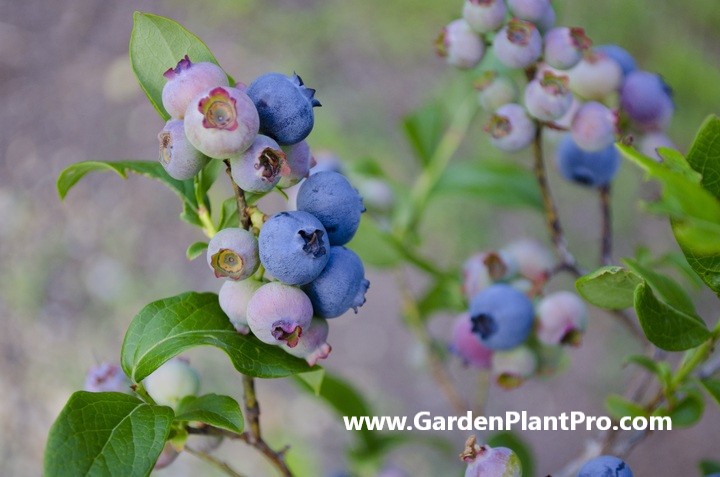
When & How To Harvest
Harvesting blueberries is an exciting part of the growing process! When the time comes to pick your blueberries, you’ll want to make sure you do it at the right time and in the proper way.
The best time to harvest blueberries is usually late spring through to early summer, depending on your variety and climate. The berries should be plump, firm and a deep blue color. Check for signs of ripeness, like a sweet aroma and a slightly soft feel when gently pressed.
To pick the berries, hold the stem between your thumb and forefinger. Gently twist and pull with a slight upward motion. You may need to use scissors to snip off any stubborn stems or branches that won’t separate from the bush.
Once you’ve harvested all the ripe berries, it’s important to dispose of any dead or damaged plants or branches you may have come across while picking. This helps keep your garden healthy and reduces the chance of disease or pests taking over during harvesting season.
Once you’ve harvested your blueberries, you can store them in the fridge for up to two weeks or freeze them for up to one year. If you’re looking for more immediate uses of your fresh harvest, you can use them in smoothies, jams or pies!
Storing & Preserving
Once your blueberries are harvested, you need to store and preserve them properly in order to maintain their freshness and flavor. Here are some tips and tricks to help you keep your blueberries lasting longer.
Refrigeration: The best way to store blueberries is in the refrigerator. Make sure to place them in an airtight container or bag, lining the bottom with paper towels to absorb excess moisture. Blueberries should last up to two weeks if stored properly in the fridge.
Freezing: Another great way to preserve blueberries is by freezing them. To do this, rinse the berries and let them dry completely before putting them into an airtight container or bag. Place the container into the freezer and they will last for up to one year!
Drying: You can also dry blueberries for long-term storage. To do this, preheat your oven to 150 degrees Fahrenheit, spread the berries out on a baking sheet lined with parchment paper, and bake for about 8 hours until completely dry. Once cooled, store in an airtight container or bag in a cool and dark location for up to 6 months.
Preserving: You can also preserve your blueberries by making jams, jellies, conserves or sauces that will last up to one year when stored in an airtight container or jar. You can also make syrups, pies, muffins and other baked goods that will last several days when stored in an airtight container.
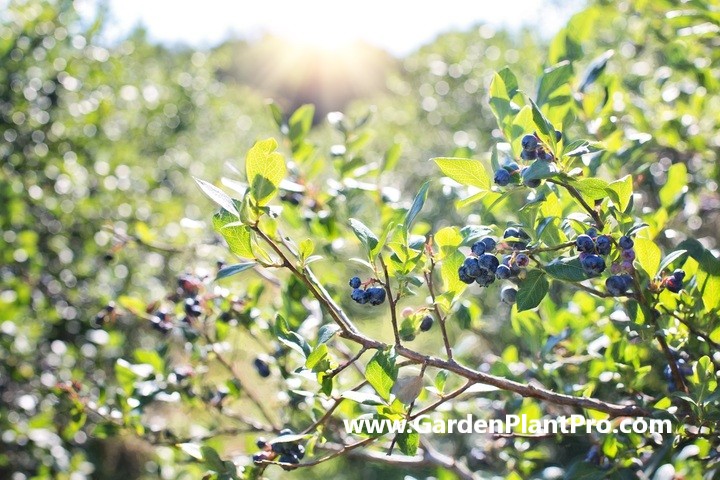
Common Diseases & How To Control Them
Blueberry plants are naturally resistant to many common pests and diseases, but it is important to monitor your plants for signs of illness or damage.
One of the most serious diseases is Phytophthora root rot, which can be a problem on poorly drained soils. To help prevent root rot, avoid planting in areas that are prone to standing water and consider adding organic matter such as compost to your soil before planting. Good drainage is essential for healthy plants.
Another common disease is mummy berry, which can cause significant crop losses if left unchecked. To control mummy berry, rake and remove mummified berries from the vicinity of the planting and cover fallen mummies with approximately 2″ of mulch or soil. Regular pruning can also help reduce the spread of disease, as it removes diseased branches and encourages new growth.
Blueberry rust is another disease that may affect blueberry plants. Symptoms include yellowish-orange spots on both sides of leaves, which eventually turn brown and drop off. To control rust, prune off infected branches and destroy any fallen leaves or fruit that may be carrying the disease. It is also important to use good gardening practices such as avoiding overcrowding and removing weeds from around your plants to reduce the risk of infection.
Finally, leaf spot can cause discoloration and defoliation in blueberry plants due to bacterial or fungal infection. To control leaf spot, apply a fungicide according to directions found on the label and prune away affected areas if necessary. Additionally, good hygiene practices such as removing infected leaves from around your plant can help prevent further spread of this disease.
CASE STUDY: We've been living off the grid for the last 40 years...
In all that time an electric wire has never been connected to our house. We haven’t gotten or paid an electricity bill in over 40 years, but we have all the electricity we want. We grow everything we need, here, in our small backyard. We also have a small medicinal garden for tough times. Read More Here...
Common Pests & How To Control Them
Common pests can be a problem for blueberry bushes, but there are ways to minimize the damage they can cause. Cherry and cranberry fruit worms are two of the most common pests that feed on the berries.
To reduce their presence, it is important to remove any debris around the plant where they may be overwintering and to apply a pyrethrum-based insecticide. If the infestation is relatively minor, it can sometimes be controlled by handpicking these bugs from your blueberry bushes.
Insecticidal soaps are also effective in controlling infestations. These soaps are non-toxic and will not harm beneficial insects or pollinators. However, they should be applied late in the afternoon or early evening when temperatures are cooler to avoid burning the leaves.
Weeds should also be suppressed before planting blueberries to reduce their competition with the plants for resources such as water, light and nutrients. If this is done in the fall, a cover crop such as buckwheat or oats can be planted and allowed to grow until spring when it can be tilled into the soil. This will also improve soil structure and help prevent weeds from germinating.
Finally, make sure that you keep your soil pH at 5.5 or lower to avoid pest problems and diseases associated with high pH levels. Check the pH of your soil in spring and add sulphur chips if it needs lowering. This shouldn’t need to be done too often as blueberry bushes are naturally resistant to many common pests and diseases.
Other Tips & Tricks
Other Tips & Tricks
Having a successful blueberry crop is not only about choosing the right variety and preparing the soil. Here are some additional tips and tricks to help maximize your blueberry harvest:
• Prune blueberry plants regularly. Just remove any dead or damaged shoots and very low growth that will hang to the ground when laden with fruit.
• Mulch around your blueberry plants to help retain moisture, control weeds, and protect them from winter cold. Use straw, grass clippings, or other organic material.
• Fertilize your blueberry plants with an acidic fertilizer in spring and summer, but be sure to follow the instructions on the product label.
• Water your blueberry plants deeply but infrequently. This will encourage deep rooting–ideal for blueberries– and reduce the risk of disease.
• Plant companion crops near your blueberries to attract beneficial insects that help protect against pests and diseases. Some good choices include marigolds, basil, chives, dill, and garlic.
• Harvest blueberries when they are fully ripe; this will ensure maximum flavor and sweetness.
• Pick over the entire bush each time you harvest so you don’t miss any ripe berries!
Companion Planting
Companion planting is a great way to help your blueberry bushes thrive. Growing certain plants alongside blueberry bushes can help provide a natural pest control, improve soil fertility, and even attract beneficial pollinators.
One of the best companion plants for blueberries is rhododendron. These plants also thrive in sunshine and acidic soil, making them an ideal match for blueberries. When planting, keep in mind that blueberry plants require generous space between them and their companion plants in order to thrive.
One of the best ways to ensure your blueberry bushes get the right amount of sun is to plant them in a sunny location. It’s also important to add peat moss to the soil before planting, as this will help maintain the acidic balance required by blueberries.
Once planted, there are certain companion plants that can help your blueberries stay healthy and productive. Try planting strawberries, clover, legumes, oak, pine, and wildflowers around your bushes. Evergreens like spruce, pine, yew, fir, and juniper can also act as excellent companion plants for blueberries.
Basil, thyme, and rhubarb are also great companion plants for blueberries as they can help repel insects from your bushes. Adding these plants alongside your blueberry hedge will also create an attractive edible landscape that you’ll be able to enjoy all summer long!

Using Your Harvest
Once your blueberry bushes are ready to harvest, there are a number of ways to use the delicious fruits. Fresh blueberries are a great snack on their own, or can be added to salads and yogurt for a healthy boost. They also make a great addition to baked goods such as muffins and pancakes. Blueberries can also be frozen, canned or dried for later use in jams and jellies.
When harvesting your blueberries, make sure to wait until they are fully ripe before picking them. Fully ripe berries will be juicy, plump, and firm with a deep blue-purple color. When you’re ready to pick, gently twist the berry off the bush with your fingers or pick it with scissors. Be careful not to pull on the stem as this can cause damage to the plant.
If you’re planning on freezing your harvest, spread the berries out on a baking sheet and place in the freezer overnight. The next morning, transfer the frozen berries into an airtight container or plastic bag and store in the freezer for up to 8 months.
When it comes time to can your harvest, make sure you pay close attention to instructions from your recipe or canning guide. Blueberries are high in acidity which makes them ideal for pressure canning and boiling water bath canning methods.
Drying your blueberries is another great way of preserving them for later use and is especially useful if you want to enjoy those delicious summer flavors all year round!
No matter how you choose to use your harvest, growing your own blueberry bushes at home is a rewarding experience that provides you with delicious fruits for years!


